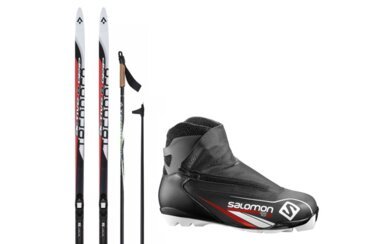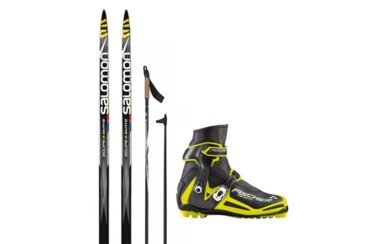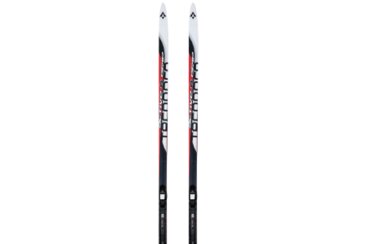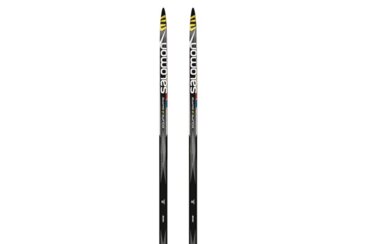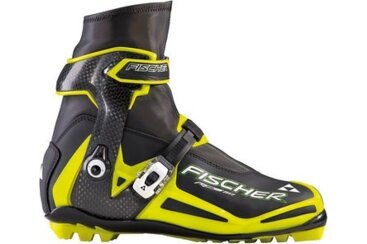Cross-country skiing – the Nordic version of skiing is not only popular endurance training, but also an outdoor adventure in nature. Fresh air and the white snow-covered landscape make cross-country skiing a special experience. Equip yourself with the right cross-country skiing equipment and be ready for your adventure!
Snap on the cross-country skis
If you want to explore the deep snowy winter landscape in a sporty way, then cross-country skiing is the right thing for you. The choice of different cross-country skiing routes for beginners and professionals in Austria is huge. And the snow-covered landscape is simply a dream. And incidentally, cross-country skiing is particularly easy on the joints and a perfect full body workout, as many different muscle groups are used. So what are you waiting for? Start your cross-country skiing tour!
One sport, two styles: Classic vs. skating
A question of style: in cross-country skiing a distinction is made between the two techniques "classic" and "skating".
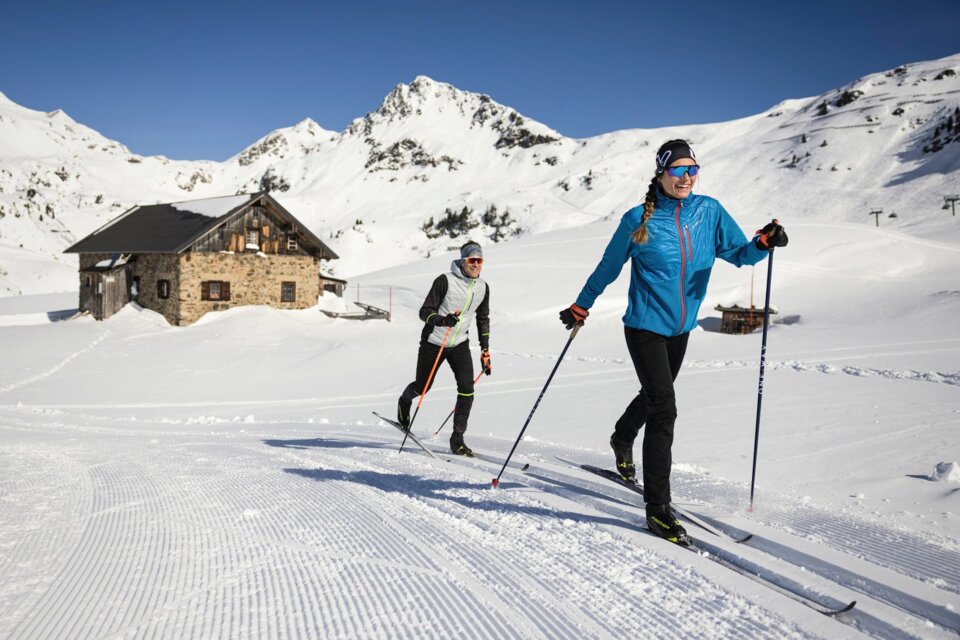
Classic
The best way to get started in cross-country skiing is with the classic technique. With this style you ski in prepared and set parallel tracks, so-called cross-country ski trails. The movements are similar to walking. The right arm goes forward with the cross-country pole and you push off the ground with your right foot at the same time. Then you change sides.
Skating
With skating you move a bit more dynamically and usually faster than with the classic style. You leave the cross-country trail and are on a smooth snow surface or in open terrain. Another difference is the movement, which is similar to ice skating or inline skating. In skating, you push off to the side with the cross-country skis and combine this movement with the use of the pole. The correct timing for using the pole and kicking off requires some practice. But once you get the hang of it, it's really fun to glide along on the snow.

What does cross-country skiing equipment include?
Cross-country skis
Classic cross-country skis consists of the grip zone (in the middle under your foot) and the glide zone (front and back of the ski). The classic ski is longer and in fact about 20 cm longer than your height. Skating skis have just one glide zone, which extends over the entire length of the ski. Skating skis are shorter than classic skis. An ideal length is about 10 cm longer than your height.
Cross-country ski boots
The right cross-country ski boots are also important for a carefree cross-country skiing tour. The classic cross-country ski boot has a soft outsole for a natural rolling motion. The shaft is lower to allow more freedom of movement. The skating boot has a stiffer outsole and a higher shaft for more stability and a good grip.
Cross-country ski poles
The cross-country ski poles drive you forwards. They are light, unbreakable and should sit comfortably in the hand. For classic cross-country skiing, poles with a length up to under the armpits are ideal. For skating, the poles reach to the chin.
The right clothing
Clothing for cross-country skiing should be breathable, protect you from wind and moisture and offer you optimal freedom of movement. Since you are in constant motion while cross-country skiing and you will get warm quickly, we recommend the so called onion principle. A baselayer, for example functional underwear made of materials such as merino wool or synthetic fibres, absorbs sweat quickly and releases it to the outer layers. The midlayer keeps you warm. For cross-country skiing, you can use shirts or zip shirts. The outer shell (cross-country jacket and pants) protects you from wind and weather.
Cross-country gloves should be appropriate for the temperature, but not too thick. Thick ski gloves can quickly become too warm and restrict your freedom of movement. A headband or thin beanie and a thin scarf or bandana will protect you from the wind. When the sun is shining, sunglasses are a must.

